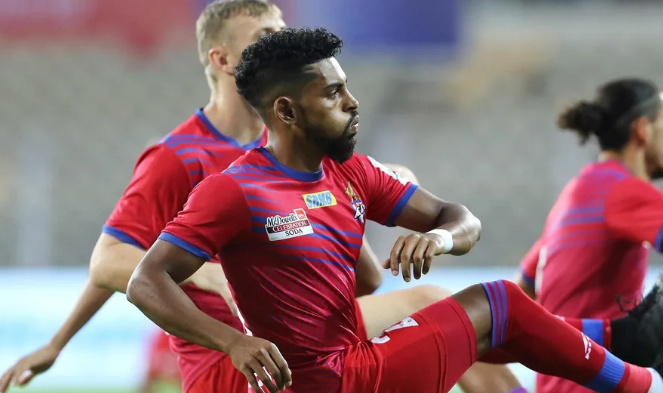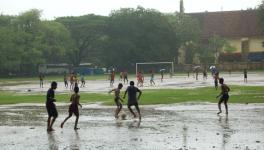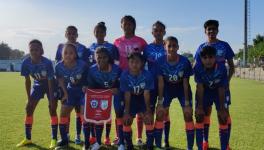ISL 2021-22 Preview: Wait Looks Set to Continue for the Promised Indian Football Renaissance

The Indian Super League (ISL) 2021-22 season preview (Pic: ISL).
The performance of the India under-23 football team in the recent Asian championship qualifiers has raised some hopes. The side did well to snatch a surprise win over Oman and remained in the hunt for a place in the final rounds for the first time.
The campaign had more than one positive. It did manage to light up the otherwise gloomy atmosphere of Indian football this festive season. To add to it, Igor Stimac, after many months, looked genuinely upbeat, notwithstanding the SAFF triumph in Male.
But the biggest optimism generated was from the pitch. A bunch of youngsters, led by Suresh Singh Wangjam, gave a pleasant display, often beyond the usual expectations. Dheeraj Singh, Akash Misra, Deepak Tangri, Apuia, Vikram Pratap Singh, Rahim Ali, Rohit Danu and company did what many of their seniors couldn’t at the senior level in recent years.
All these footballers have a couple of things in common. First, they are all part of the Indian Super League (ISL). Secondly, they learned the tricks of the trade at All India Football Federation’s (AIFF) developmental side, Indian Arrows, before being lured away by the franchise league.
For all its other activities that do not always help Indian football, the federation has done a commendable job (though reluctantly at times) in the last 10 years to produce a good number of decently skillful players from its age group stable. To say that without these players it would have been difficult to fill several gaps in the national team won’t be an overstatement. The traditional supply line of Indian football has already dried up and the newly introduced system is yet to show necessary results. The Indian Arrows remains the only source to avoid embarrassment.
Seven seasons of the Indian Super League (ISL) have already gone by. The eighth edition is set to kick off with much fanfare. There will be professional television coverage and top-class commentary for the competition to be played in a bio bubble. These are additional attractions for the games to be managed largely by foreign coaches and revolve around quality players from abroad. Overall, it is a smart and appealing package; an immensely sellable product from the point of entertainment.
It can’t be faulted. Football, after all, is a form of entertainment for majority spectators. Yet, some may look forward to one more aspect and would pray hard not to feel disappointed again. It was difficult to find a player in the last seven seasons who could truly be described as an ISL product. The eighth year could be different; after all each team would now be restricted to four foreigners on the pitch. It would lead to more Indian footballers getting the opportunity to play and some of them may prove worthy of the chances they received.
Also Read | The Spin in the Dramatic Emergence of Akshay Karnewar
But will one get to see some genuine good players coming up through the youth development schemes of the clubs? A lot was said about youth development plans in the launching year of the league. Each franchise and club would be forced to spend a substantial budget on youth development, it was promised. True, seven years is not a long period to showcase real development in football and the pandemic has disrupted all such strategies. But to have at least a glimpse of the much-promised bright future that lies ahead is not much to ask for.
Apart from the large number of Indian Arrows footballers plying their trade in the ISL, some new faces like Liston Colaco or Glan Martins have emerged through the top league last season, though their talent was initially spotted in the Goa Professional League. This season, some more fresh faces could be seen -- a few have been recruited from different football schools including the Raman Vijayan Academy and Reliance Foundation.
This is a new trend and definitely an encouraging one. A few quality academies are coming up in different parts of the country with the potential to produce good players. The transfer fees attached to such deals could be a reason that has inspired these academies.
These are positive signs that can jell up to make the eighth edition of the ISL more down to earth and closer to reality. At the same time, the tournament’s emphasis (read addiction) on foreign flavour is hard to shake off for the franchises. After seven seasons, Khalid Jamil has become the first Indian coach to be given the honour of occupying the chair of the head coach on a full-time basis. It could well turn out to be a one-off incident as there is hardly any reason to believe all other clubs will follow the example of NorthEast United.
Also Read | Will We See More Foreign Players in Indian Football Clubs in the Near Future?
A former India coach said: “Indian coaches can’t deliver the goods and Indian players learn a lot while playing with foreign teammates – these are Indian football’s worst but well-established myths. History tells us our national team’s best results came under Indian coaches and with players who rarely had a chance to play with foreigners at the domestic level. It is all about skills and quality and how a coach handles his own footballers.”
It is no crime to recruit foreign players – clubs all over the world do it simply because they want to win trophies. The ISL clubs also nurture such ambitions. They pay astronomical amounts to rope in players from Australia, Spain, Fiji and other far-off countries. Absolutely fine. But when a middle-rung Uzbekistan club FC Nasaf crush high-budget ATK Mohun Bagan by half a dozen goals in the AFC Cup, the entire purpose looks lost. Khusayin Norchaev, the hat-trick man in the Nafas line-up is a 19-year-old local boy who receives moderate payment in comparison to overseas stars in Indian football.
In the end, football is a demanding game – it is difficult to succeed without the right focus. A country’s top league always plays multiple roles. It popularizes the game and at the same time takes an active part in providing the right inputs for the national team – at least that’s the way things happen in the developed nations. Any attempt to mould a serious professional competition into a showpiece event for the benefit of a few smiling faces on the telly can destroy that basic purpose.
Get the latest reports & analysis with people's perspective on Protests, movements & deep analytical videos, discussions of the current affairs in your Telegram app. Subscribe to NewsClick's Telegram channel & get Real-Time updates on stories, as they get published on our website.
























